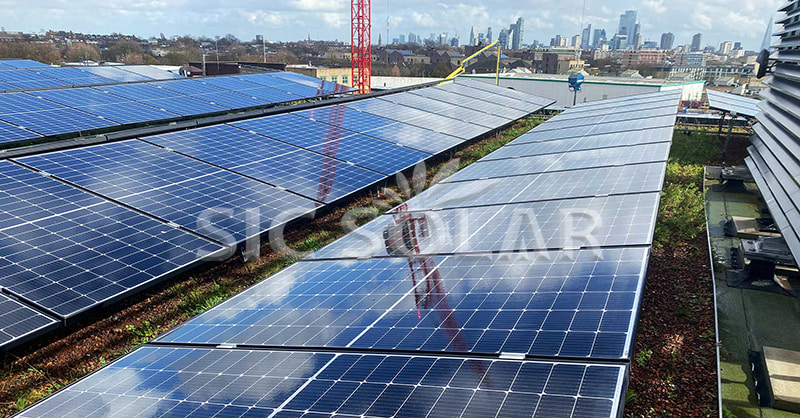
What Are You Looking For?
Mounting systems are the backbone of any solar installation. They provide the structural support needed to keep solar panels fixed in place, angled correctly, and secure against environmental forces. The type of mounting system chosen depends on the project location, roof structure, ground conditions, and energy goals. Here’s a breakdown of the main types of solar panel mounting systems and where each one is typically used.
1. Roof Mounted Systems
Roof Mounted systems are the most common type for residential and commercial buildings. These are installed directly on the roof surface and are ideal when space is limited. There are several variations:
Pitched Roof Mounts: Designed for sloped roofs, these systems use roof hooks or brackets to secure the panels. The angle of the roof usually provides the necessary tilt for optimal solar exposure.
Flat Roof Mounts: On flat roofs, tilted frames are used to angle the panels. These can be fixed or adjustable, and often include ballasted systems that don’t penetrate the roof surface.
Metal Roof Mounts: Special clamps or brackets are used to attach panels without drilling, especially on standing seam metal roofs. For corrugated metal roofs, brackets with waterproof gaskets are common.

2. Ground Mounted Systems
Ground Mounted systems are installed directly into the soil, making them ideal for properties with ample open space. They offer flexibility in orientation and tilt angle and are commonly used in utility-scale and off-grid solar projects.
Standard Ground Mounts: Panels are mounted on steel or aluminum structures anchored to the ground using concrete foundations or pile-driven supports.
Pole Mounts: These systems elevate panels on a single or dual pole, suitable for smaller installations or uneven terrain. Some pole mounts can tilt manually or automatically to follow the sun.
3. Tracking Systems
Tracking systems increase energy yield by following the sun’s path throughout the day. Though more expensive and complex, they can boost energy production by 15–30% compared to fixed mounts.
Single-Axis Trackers: These follow the sun from east to west and are commonly used in large-scale solar farms.
Dual-Axis Trackers: These adjust both vertically and horizontally, allowing for maximum exposure year-round. They're more precise but also more costly and maintenance-intensive.
4. Wall Mounted or Balcony Systems
For urban environments or apartment dwellers, mounting systems attached to walls or balconies offer an efficient use of space. They usually support a small number of panels and are designed for simplicity and easy access.
SIC Solar, a manufacturer and supplier of photovoltaic mounting systems, offers a wide range of these structures, including specialized solutions for rooftops, ground installations, and balconies. Their designs focus on strength, ease of installation, and adaptability to different environmental conditions.